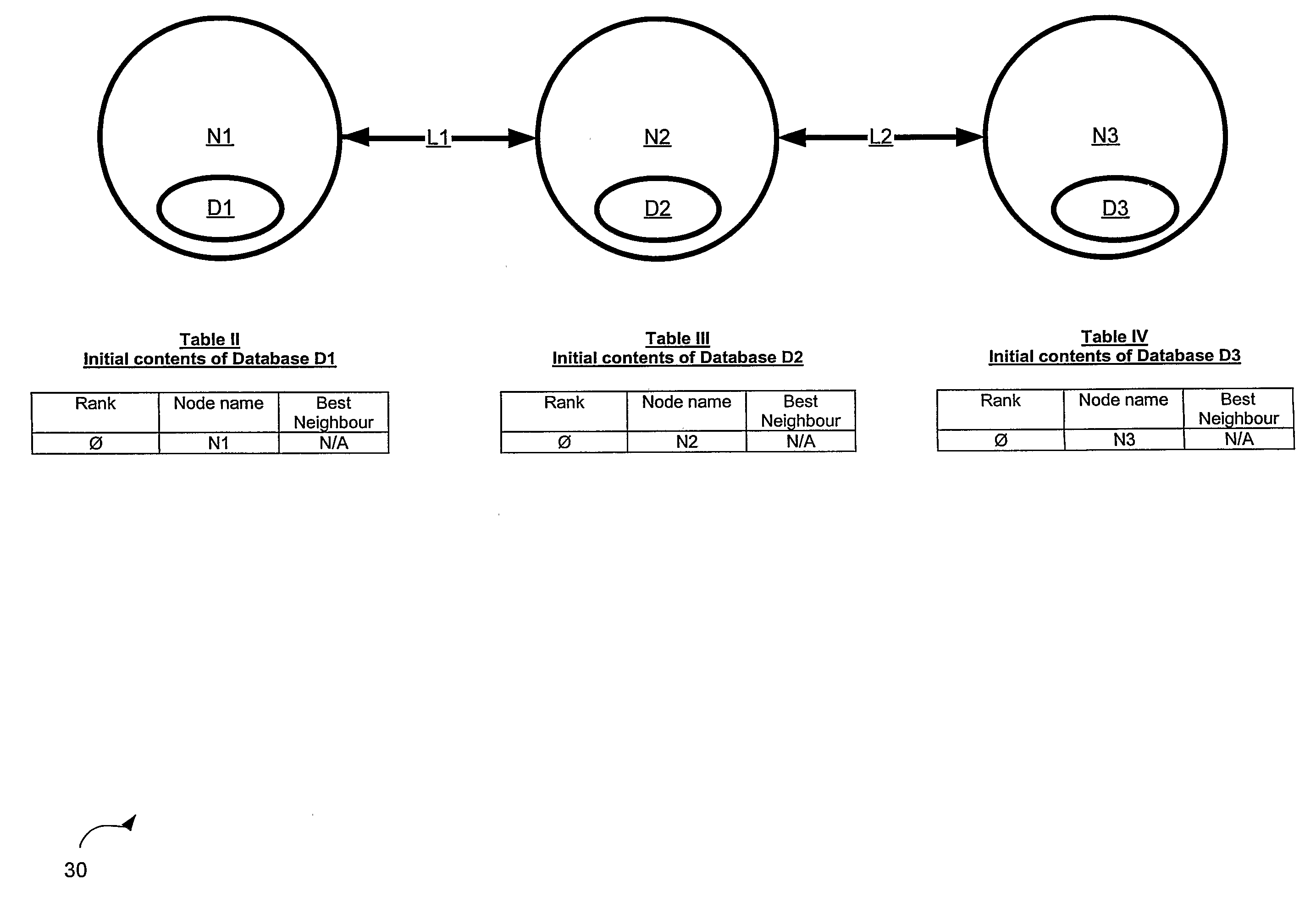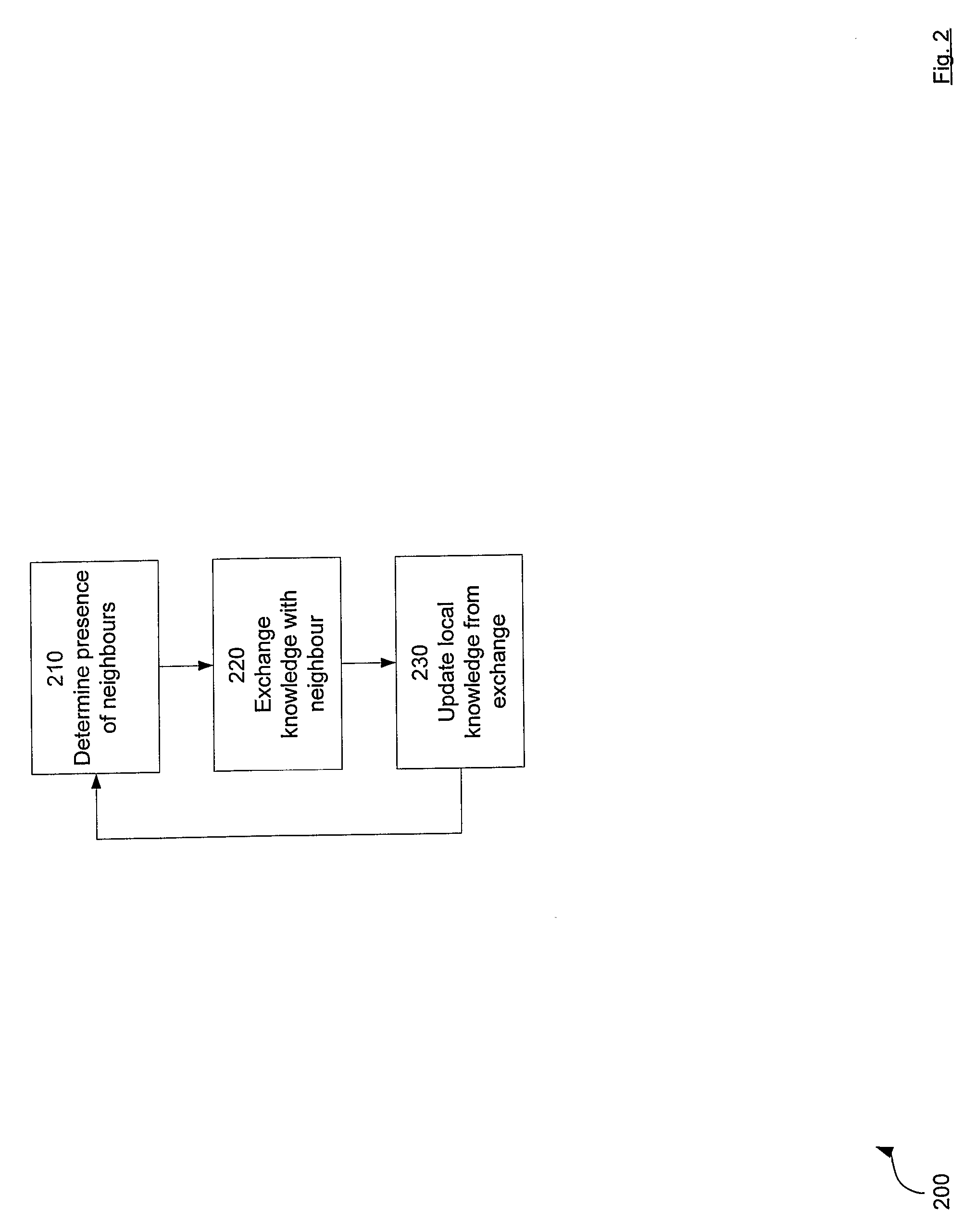Network Architecture
a network architecture and network technology, applied in the field of electronic devices, telecommunications and computing devices, can solve the problems of increasing network latency, increasing complexity of traffic routing, and extremely bloated routing tables throughout the intern
- Summary
- Abstract
- Description
- Claims
- Application Information
AI Technical Summary
Benefits of technology
Problems solved by technology
Method used
Image
Examples
Embodiment Construction
[0079] Referring now to FIG. 1 a network in accordance with an embodiment of the invention is indicated generally at 30. Network 30 comprises a plurality of nodes N1, N2 and N3. Collectively, nodes N1, N2 and N3 are referred to as nodes N, and generically they are referred to as node N. This nomenclature is used for other elements discussed herein.
[0080] Node N1 is connected to node N2 via a first physical link L1. Node N2 is connected to node N3 via a second link L2. Node N1 is a neighbour to node N2 and likewise node N2 is a neighbour to node N1, since they are connected by link L1. By the same token, node N3 is a neighbour to node N2 and likewise node N2 is a neighbour to node N3, since they are connected by link L2. Thus, the term “neighbour” (and variants thereof, as the context requires) is used herein to refer to nodes N that are connected another node N by a single link L.
[0081] Each node N is any type of computing device that is operable to communicate with another node N...
PUM
 Login to View More
Login to View More Abstract
Description
Claims
Application Information
 Login to View More
Login to View More - R&D
- Intellectual Property
- Life Sciences
- Materials
- Tech Scout
- Unparalleled Data Quality
- Higher Quality Content
- 60% Fewer Hallucinations
Browse by: Latest US Patents, China's latest patents, Technical Efficacy Thesaurus, Application Domain, Technology Topic, Popular Technical Reports.
© 2025 PatSnap. All rights reserved.Legal|Privacy policy|Modern Slavery Act Transparency Statement|Sitemap|About US| Contact US: help@patsnap.com



